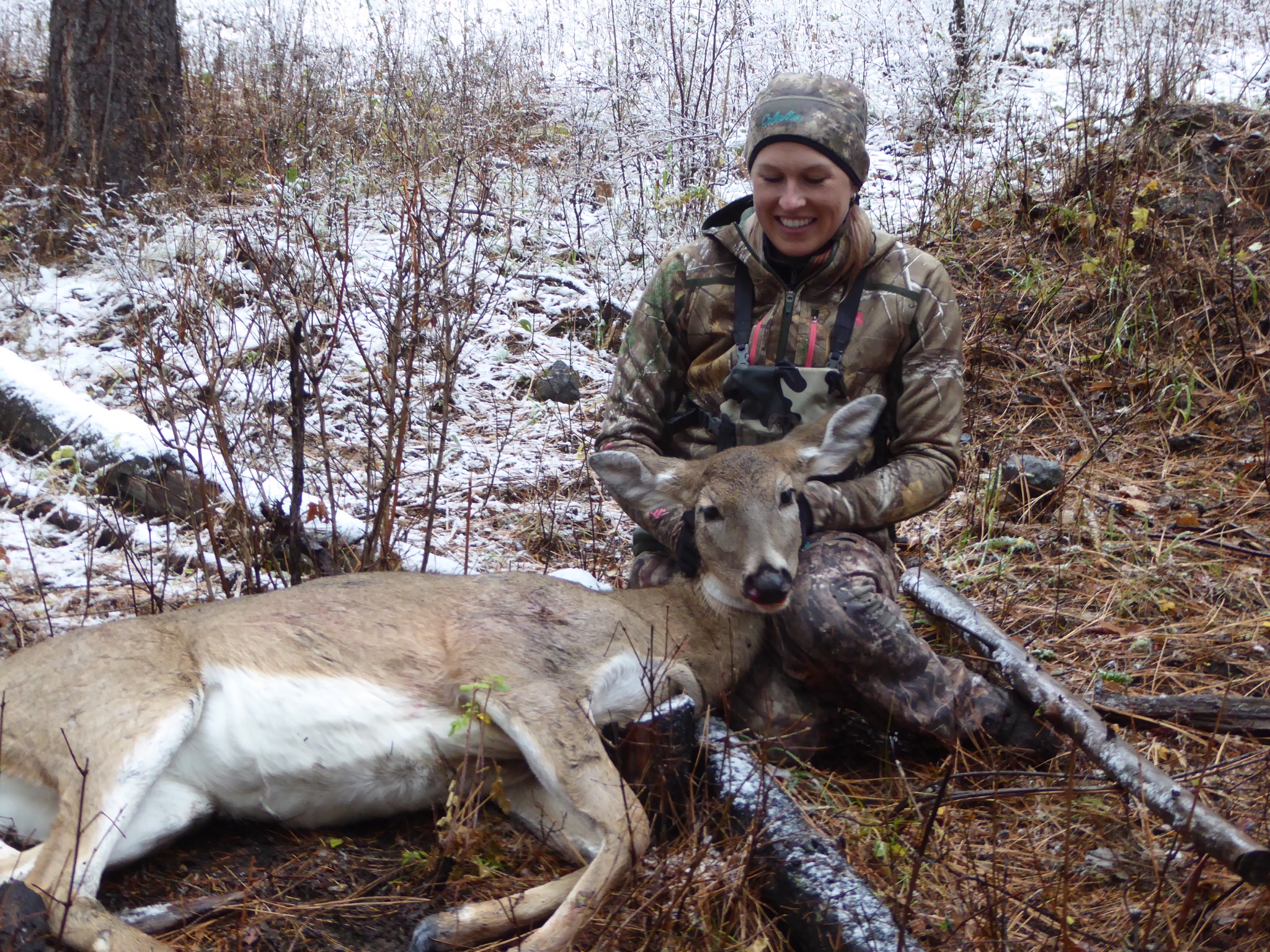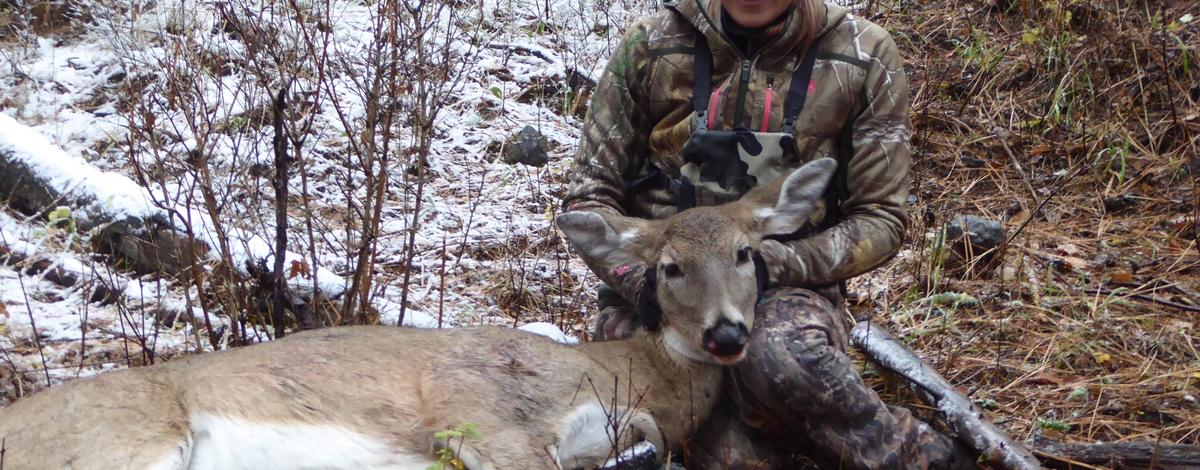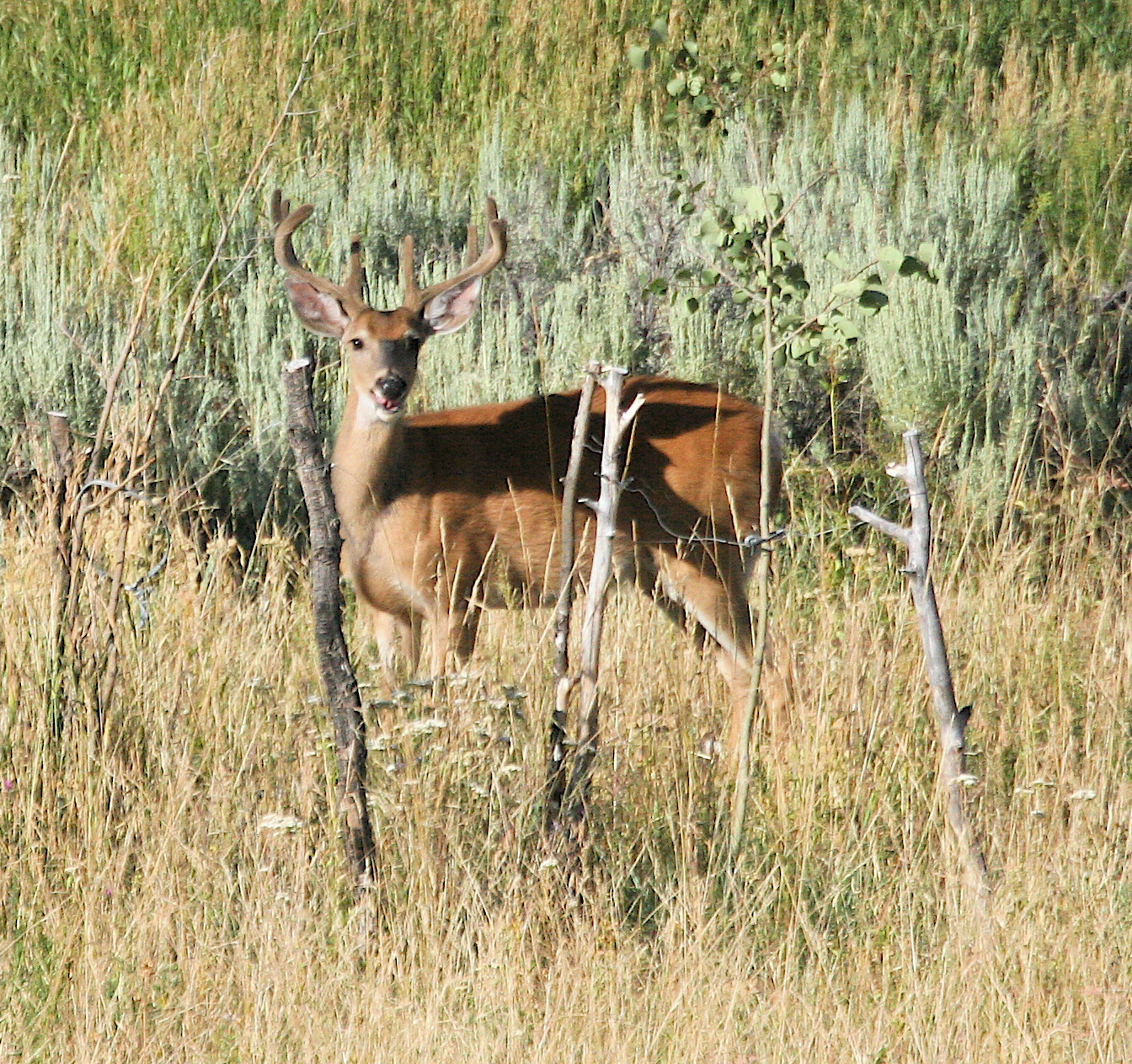A majority of Idaho’s white-tailed deer hunters surveyed show support for current white-tailed deer management, but it’s not unanimous, and there are contrasting opinions about management in the core of Idaho’s white-tailed deer country.
That’s a summary of the hunter survey done by Idaho Fish and Game in 2018, which the department will use in part to gauge hunter preferences as it updates its white-tailed deer management plan. Results were similar compared to the last white-tailed deer survey conducted in 2003.
“We’ve seen that most whitetail hunters are satisfied with the current management, but survey results also suggest opportunities to do even better,” Wildlife Bureau Chief Scott Reinecker said.

A draft of the new white-tailed deer plan is expected to be released during winter, and there will be more opportunities for public comment. After adoption, the management plan will help guide rules and seasons for whitetail hunting over the next six years.
Nearly 8,000 white-tailed deer hunters responded to surveys with identical questions available three ways. Two surveys – mail and email – were sent randomly to hunters who have bought white-tailed deer tags in the past. The third survey was on the internet and open to whoever wanted to take it. The two random surveys showed very similar results, typical responses were within a percentage point of each other.
Random surveys (mail and email) showed 52 percent of respondents had more than 10 years’ experience hunting white-tailed deer in Idaho, and when deer hunting, 79 percent said they spend most of their time hunting whitetails.
Majority of surveyed white-tailed deer hunters are satisfied
The random surveys showed 72 percent of respondents were satisfied with their chances to harvest a white-tailed deer, 71 percent said they were satisfied with their chances to harvest a buck, and 58 percent were satisfied with their chances to harvest a mature white-tailed buck.
However, there were significant differences in responses between the random surveys and the open survey regarding attitudes about harvesting white-tailed bucks (see below). That tells Fish and Game officials that some hunters feel strongly for and against some aspects of white-tailed deer management, and there are opportunities to meet additional desires.
What do white-tailed deer hunters like?
While the majority of hunters were satisfied or very satisfied with white-tailed deer hunting in Idaho. Here's what was important to them:
- Satisfied with number of days and hunting opportunities
- Like to hunt in early and late November
- Satisfied with chance to harvest a deer in Idaho
- Satisfied with harvesting a mature buck
What hunters harvested, where and when they like to hunt
During the 2017 season, 39 percent of respondents answered that they harvested a white-tailed deer, most of which were antlerless (44 percent) followed by medium bucks (35 percent). Small bucks (12 percent) and large bucks (9 percent) accounted for the remaining responses.

Three surveys showed slightly different results for the most common units in which respondents hunted, but in all three, Unit 10A was the most common.
- Mail survey respondents (2,922): Units 10A, 1, 3, 2 and 4.
- Email survey respondents (3,757): Units 10A, 1, 8A, 3, and 2.
- Open internet respondents (1,057): Units 10A, 8A, 8, 11A and 5.
A slight majority hunted white-tailed deer in the same unit every year (52 percent) and 43 percent reported hunting two or three units each year.
Random surveys showed hunters were largely satisfied with number of days offered for white-tailed deer hunting (70 percent) and showed strong support for November hunts with 75 percent of respondents saying early November hunts are important and 77 percent saying late November hunts are important.
A large majority (76 percent) also said it is important for them to hunt white-tailed every year, and 50 percent also said it is important to hunt white-tailed deer at the same time and place as elk.
In response to access to private lands, 60 percent agreed or strongly agreed Fish and Game should spend more time and resources developing public access to private lands for white-tailed deer hunting.
Where hunters differed in surveys
Three different surveys showed there are many things the vast majority of white-tailed hunters agree on while also recognizing there are strong feelings by some hunters, which was seen in the open survey. Fish and Game strives to recognize the preferences of the majority of hunters without disregarding the feelings of others as it moves forward with updating its white-tailed management plan and setting the upcoming seasons.
The differences between random surveys and the open internet survey were most pronounced regarding overall hunting satisfaction, and the opportunity to take a white-tailed buck, particularly large bucks. Deeper analysis of the surveys focused on hunters who hunted in the Panhandle and Clearwater regions, where 92 percent of all white-tailed deer are taken in Idaho.
In that analysis, random mail and email survey respondents were largely satisfied with their opportunity to harvest a white-tailed buck with 77 percent (mail) and 80 percent (email) agreeing. But satisfaction level dropped to 67 percent when internet respondents answered that question.
The differences became more pronounced whether they were satisfied with their chance to harvest a mature white-tailed buck with 64 and 63 percent of random mail and email respondents agreeing, but only 46 percent of internet respondents agreeing.
The split continued when asked about the overall quality of the hunting experience with random mail/email respondents saying they were either satisfied or very satisfied (73 percent and 77 percent respectively), but 60 percent of internet respondents were satisfied or very satisfied.
The differences also continued regarding whether some units should be managed for larger white-tailed bucks with 42 percent of internet respondents agreeing or strongly agreeing, with that statement, while 31 and 32 percent (mail/email) agreed or strongly agreed with that statement.
Not all whitetail hunters surveyed are satisfied
While the majority of hunters were satisfied or very satisfied with whitetail hunting in Idaho, a smaller percentage (16 percent) of random mail respondents said they were very dissatisfied with at least one aspect of it. The leading causes of dissatisfaction were:
- Length of hunt (too long)
- Lack of access to private land
- Too many nonresident hunters
- Hunter congestion
- Lack of access to public lands
Other feedback from whitetail hunters
Hunters were also asked if there’s anything else they would like to tell Fish and Game about whitetail hunting, and the most common responses were:
- Things are good, I like current management
- Lack of access to private land
- Don’t manage for trophy bucks/maintain opportunity
- Low numbers of mature bucks
Q&A about the surveys
Who developed the surveys? University of Idaho worked with Fish and Game to create the original survey. The department relies on their expertise in writing questions to create scientifically valid surveys.
Why three surveys? Fish and Game uses random surveys as an opportunity to gauge sportsmen and women’s attitudes and preferences on a variety of topics. Random surveys are considered the most unbiased way to gauge public sentiment.
Random mail surveys are more time-consuming and costly, but they reach the widest segment of hunters, because everyone who buys a hunting license must provide their mailing address. Email surveys are less expensive and less labor intensive, but not all hunters provide their email addresses, so it’s a slightly smaller pool.
Fish and Game provides an open, internet survey because not every hunter is randomly selected, so many do not have the opportunity to take the survey. Fish and Game often provides an open survey for anyone to take, but the results can be biased. People who are for or against something can campaign and encourage others who agree with them to take the open survey, so the results can be different than random samples. Open surveys are a good way to capture the sentiments of smaller groups of people who feel very passionate about something.
Does Fish and Game set seasons and rules based on surveys? Surveys results are one of many factors biologists review and consider before recommending deer hunting seasons and rules to the Fish and Game Commission, which sets them. But surveys are a valuable tool to understand how a large segment of hunters feel about various topics. They provide guidance, but are not “votes” for or against something where a majority wins on a particular topic.
How else can hunters comment on whitetail seasons? Fish and Game will provide more opportunities to comment on the upcoming white-tailed deer (and mule deer) management plans when they are released as drafts.
Fish and Game will also set seasons and rules for deer, elk, pronghorns, black bears, mountain lions and wolves for 2019-20. People can attend open houses in December to provide their support for existing rules, or propose changes. They will have more opportunities to comment on proposed hunting rules and seasons before they’re finalized in March.
What’s next? As Fish and Game staff refine season proposals based on public opinion surveys, and data derived from harvest surveys etc., hunters will have additional opportunity to share thoughts and preferences with the Fish and Game Commission as the department staff work toward finalizing the 2019-20 hunting seasons, which the commission is scheduled to set in March.
Here is the executive summary of the white-tailed deer survey.


